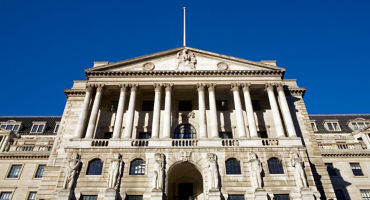Following much debate in markets over the course of the summer, it seems this global rate-hiking cycle — one of the fastest and most aggressive in decades — has come to an end, rather than a pause. Over the course of October and the first days of November, we have seen central banks across developed economies hitting the brakes. Policymakers at the Bank of Japan (BoJ), European Central Bank, Reserve Bank of Australia (RBA), Bank of New Zealand, US Federal Reserve (Fed) and Bank of England (BoE) all decided to keep rates steady and adopt a more dovish tone. In addition, a notable development was the BoJ announcing a further step towards a de facto removal of yield curve control and therefore policy normalisation, something we have been watching for closely for some time. Even with these measures, however, Japanese monetary policy remains exceptionally loose.
On the one hand, the likely end of broad-based tightening is coming at a surprising time. Inflation remains far from target and has even increased in some countries — forcing, for instance, the RBA to abandon its holding position and hike by 25 basis points at its 7 November board meeting. Similarly, the US saw a surprise uptick in price pressures, with inflation reaching 3.7% at the end of September, almost twice the stated 2% target. US unemployment also remains tight at 3.8%, which is well below the estimated 4.5% level needed to avoid an acceleration in the inflation rate.
On the other hand, inflation has come down significantly from its peak in several economies, making the growth/inflation trade-off top of mind for policymakers all over the world. At the same time, rates continued to climb and continued the steepening trend observed in September, with long-dated bonds selling off more than the front end of curves. And the steep rises in term premia observed in September and, to a lesser extent, October, may continue as markets become increasingly concerned about debt sustainability.
This environment presents a difficult balancing act for central banks, whose messaging appears to have shifted from fighting inflation at all costs to a much more nuanced message centred around not causing lasting economic damage. Markets appear to be caught in the same paradigm, pricing in a higher-for-longer rate environment, while at the same time predicting rate cuts as early as the first half of 2024.
We believe that these competing goals of curbing inflation but also preserving economic growth will lead to greater volatility and divergence as policymakers approach the dilemma differently. Some — such as the Fed — will be more focused on getting inflation back to target, while others — the BoE being a prime example, in our view — will be particularly sensitive to growth indicators and unemployment data. Markets are clearly betting that rate cuts will come in 2024, but it remains unclear to us whether rate cuts are the right thing to do, given the changing macro landscape we find ourselves in. Short-term gain has the potential to inflict long-term pain if inflation is not brought under control. All of which creates a more challenging backdrop for investors, who we think will need to actively reposition portfolios for this late-stage cycle in which uncertainty but also opportunity abound.













The real issue on rate cuts? Keep your eyes on the dot (plot)
Keep your eyes on the Fed's 2025 dot plot. The real story is where policy rates are headed, not just the next rate cut.
By
Brij Khurana